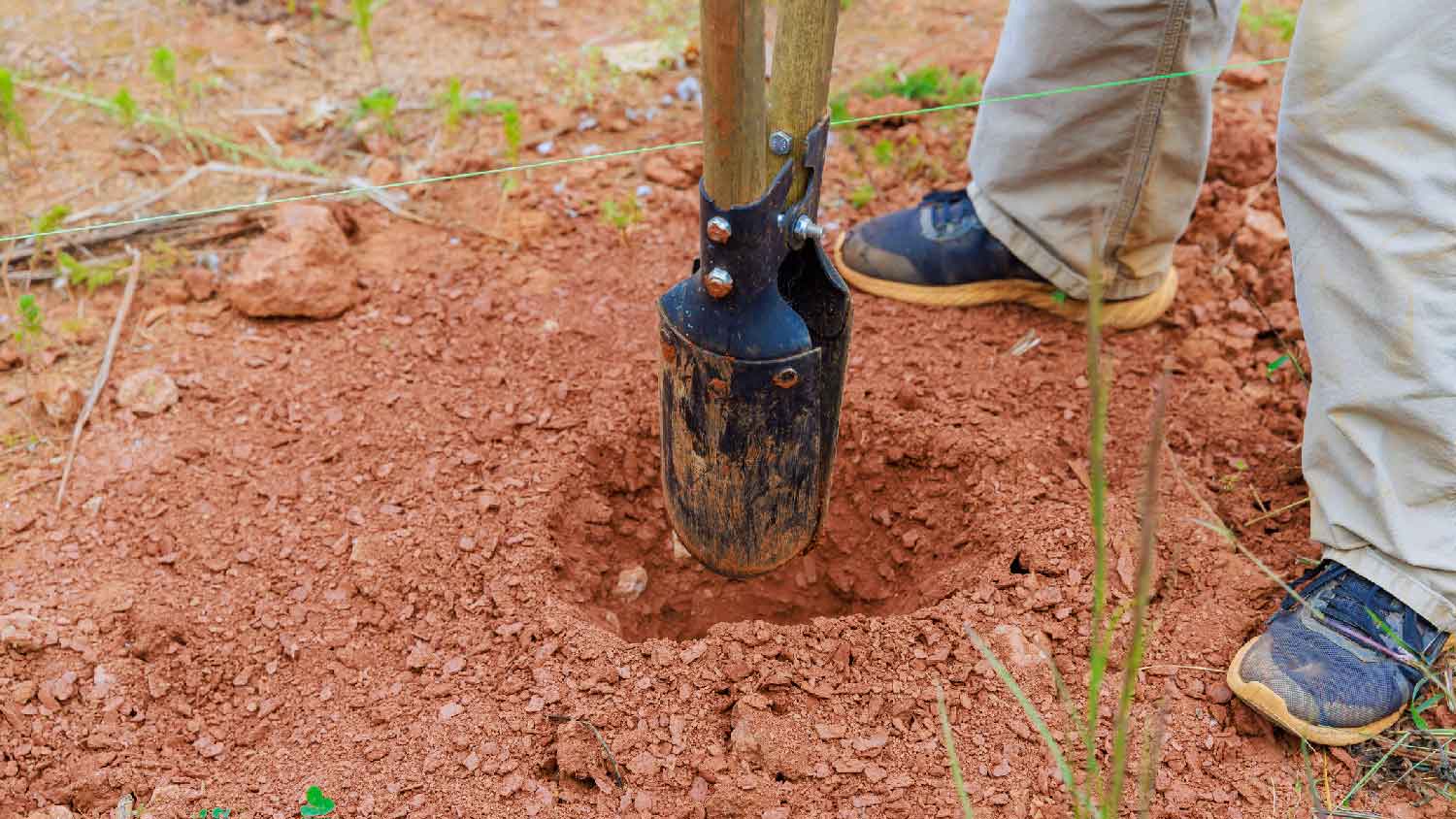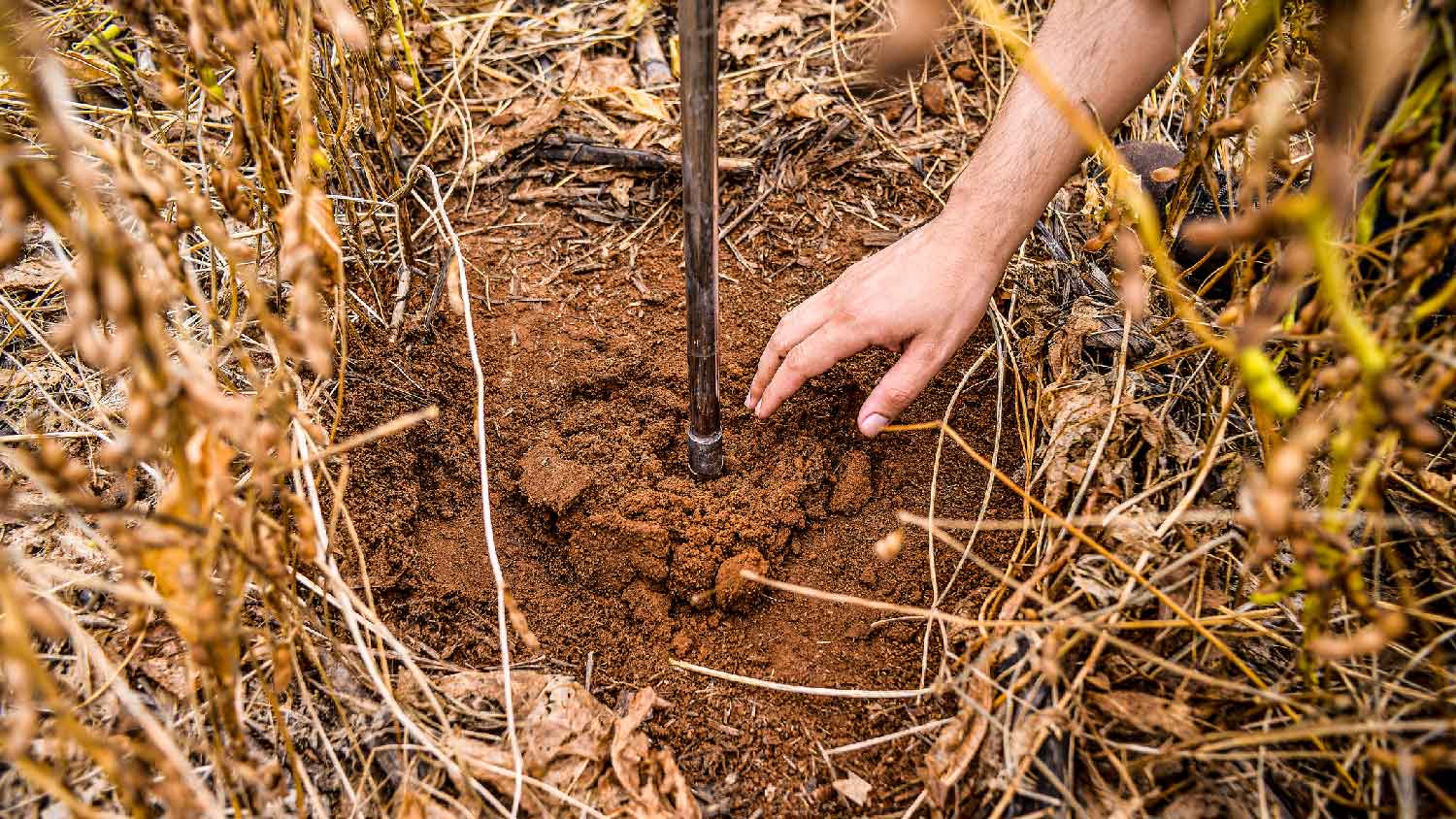
Building permits are essential. Here’s everything you need to know about building permit costs to budget accordingly for your building project.
Find the perc-fect time to test your soil’s drainage


Summer is the best time to do a perc test, as the soil is soft and water tables are often the lowest.
Your local climate and outdoor temperature will determine the best time to do a perc test.
Perc tests are usually good for two to five years, so make sure you plan ahead so that your perc test results are still good when you’re ready to start your project.
The best time to do a perc test depends mostly on your local climate and the outdoor temperatures in your area, but you’ll want to wait for a season with less precipitation and when the ground outside isn’t so hard that digging is challenging. We’ll explain the factors you should consider before scheduling a perc test and what time of year is best.
The best time to do a perc test is the summer because the soil is warm and easy to excavate. Summer also tends to bring less precipitation, which means the water table is often lower, and there will be less moisture in the ground. Dryer soil can drain more easily, which can mean a better chance of passing your perc test.

There are a few factors that affect the best time to do a perc test, including the time of year and how soon you should start your testing based on your preferred project timeline.
The climate in your area will affect your perc test results, mainly in relation to precipitation. A perc test determines how quickly the soil on your property can drain water on the surface, so you ideally want to conduct your test when the soil is dry to give it the best chance of passing. Most areas in the U.S. see less precipitation during the summer than they do in other seasons, which is one reason why summer is the best time.
It’s important to note that a perc test involves saturating the soil before conducting the test to simulate conditions in the worst possible scenario, like a flood. However, the climate can still make a difference, as water tables tend to be lower in the summer, which means there should be more room for water to drain out of your soil.
The temperatures in the summer are also the most conducive to doing perc tests. In the winter, the ground can freeze, which makes excavation more challenging. Perc tests require excavation to test how well the soil drains at a given depth—often the depth at which your septic system drain field will sit. If the ground is harder due to winter temperatures, you could end up paying more for the labor to excavate, whether your expert is digging manually or using an excavator.
In the summer, the soil is warm and easier to dig, which could lead to lower labor costs.
Your soil composition plays a major role in whether you pass or fail your perc test. Sandy soil has larger soil particles and drains much more quickly than clay soil, which has fine particles that block the flow of water. Sandy soils are more likely to pass perc tests, while clay soils are less likely. You may also need to perform a soil test.
The soil composition also plays a role in when you should do a perc test. Clay soils hold onto water more readily, so they’re more likely to freeze over and weigh more in winter temperatures. If you have sandy soil, it may not make much of a difference when you do your perc test, but clay soils are best to test in the summer.
Finally, perc tests are usually the first step in a much larger project, like new construction or installing or upgrading a septic system. Perc test results are usually good for between two and five years, so make sure to time your test so that you only have to do it once before you begin your project.
The worst time to do a perc test is in the winter, when the ground is more likely to be frozen and challenging to excavate, and water tables tend to be higher. You may pay more for labor to excavate frozen ground, and soil tends to drain more slowly in the winter, which can lead to a higher risk of failing.

A perc test costs around $1,300, and most homeowners pay somewhere between $750 and $1,900. Prices can sit as low as $300 for a single, manually dug hole for a small property, and they can reach as high as $3,000 for multiple large holes dug with an excavator for a larger property.
You can do a perc test yourself for your own knowledge, which can help determine watering schedules for your lawn or garden bed, but for all other purposes, you’ll need to hire a local soil tester or excavator.
In most cases, you’ll need a perc test if you’re building new construction, installing or replacing a septic system, or making changes to your property’s grading or drainage. Your local building department or health department will require that a professional conduct the perc test for all of these purposes before they sign off on the project.
Alans crew arrived bright and early this morning and got straight to work. Not long after, we received an introductory call from the project manager Dylan to make sure expectations were clear and followed up with us throughout the day. The crew was extremely respectful of our living area,...
The quality of work was excellent and they were flexible.
We had a great experience with this company! They were on time, fairly priced and professional. I highly recommend them!
very timely response for estimate estimated costs were within my budget very timely in scheduling work high quality of work performed very satisfied with work completed
He was a good guy. He did a great work. He was unique on what he does. He was precise. He was one of my best guys. He was always on time. He was very good on his work.
I was referred to JJ (owner) by an acquaintance in my neighborhood who was very pleased with his quality of work. After getting a few estimates, I chose to go with him and couldn't be happier with how my kitchen remodel and bathrooms (flooring, hardware, tile) turned out. He had a great team...
The work was done timely and correctly. The Mendez company had to be exact because I had a CUSTOM door that was going to be installed and I have the work done to exact specifications. The project went off without a problem as the Mendez company found low cost ways for me to repair the damage...
Berith Builders did a fantastic job on our basement project. They turned an unfinished basement into a fantastic space. Deane was a pleasure to work with. He is honest, reliable and has a great sense of humor. We hired a number of contractors over the past year (we completely renovated a...
If you are looking for a professional, quality contractor, do yourself a favor and keep looking! Tayman installed new siding, gutters/downspouts and built an enclosure around an HVAC system. 95% of the work was done by sub-contractors, not by Tayman employees. • Note- Tayman (I now know a...
Gentleman who came out to give the estimate told us that the moldy-smelling, black material on the wet baseboard was not mold but was some leftover by-product of the MDF. It's definitely mold as confirmed by 2 other professionals and a home test. He also refused to give us a written estimate....
From average costs to expert advice, get all the answers you need to get your job done.

Building permits are essential. Here’s everything you need to know about building permit costs to budget accordingly for your building project.

Home elevator costs depend on the size and type of lift, if it needs retrofitting, and the number of floors. Our guide outlines all residential elevator costs.

Discover storm damage repair costs, key price factors, and ways to save. Get transparent estimates to plan your home repairs with confidence.

How much do you pay a contractor up front? Many states cap how much a contractor can ask for before work begins. Here’s what you need to know.

Learn what’s possible and what your options might be when considering ways of raising the ceiling height in a room or your entire house.

Contractors expect you to get multiple quotes and know they won’t win your business every time. If you’re wondering how to tell a contractor you went with someone else, an honest and kind approach is key. We’ll cover what to do (and say) here.